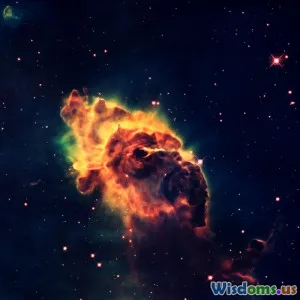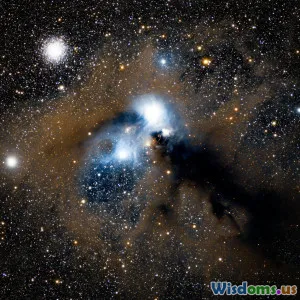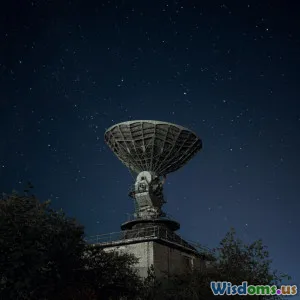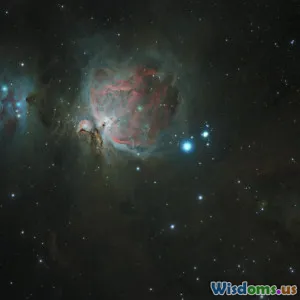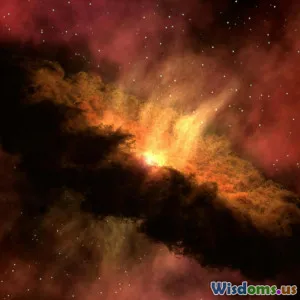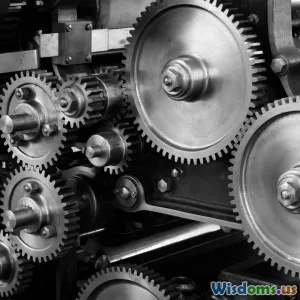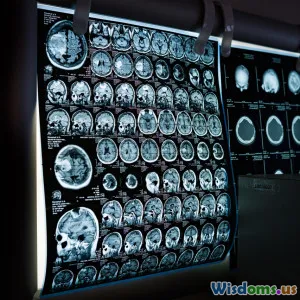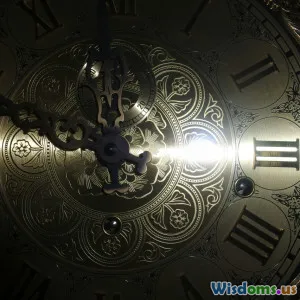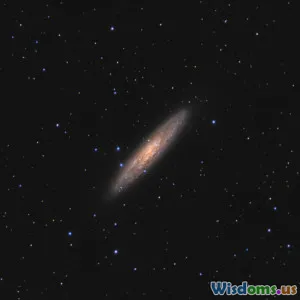
How New Stellar Discoveries Impact Cosmology
8 min read Explore how groundbreaking stellar discoveries reshape our understanding of the cosmos and cosmology's future. (0 Reviews)
How New Stellar Discoveries Impact Cosmology
Introduction
The universe has always been a vast mystery, captivating humanity since time immemorial. With every advancement in technology, astronomers uncover cosmic wonders, pushing the boundaries of our understanding. Among these wonders, new stellar discoveries stand out as critical milestones, providing fresh insights that challenge and refine cosmological models. As we learn more about stars—the fundamental building blocks of galaxies and cosmic architecture—the ripple effects deeply impact cosmology, the science of the universe’s origin, evolution, and eventual fate.
This article delves into how modern discoveries related to stars profoundly influence cosmology. From the identification of previously unknown stellar types to observations that question age-old cosmic assumptions, these breakthroughs illuminate the breathtaking complexity and dynamism of the cosmos.
The Role of Stars in Cosmology: Setting the Stage
Stars are not just luminous balls of gas; they are cosmic engines forging the elements and shaping large-scale structures. Cosmology relies on stellar information to:
- Date the age of the universe through star cluster analysis
- Understand dark matter and energy distributions indirectly
- Trace the cosmic chemical evolution via stellar nucleosynthesis
- Test predictions from the Big Bang theory
Therefore, the discovery of new stellar phenomena directly informs, refutes, or corroborates cosmological theories.
Breaking New Ground: Recent Stellar Discoveries
1. Detection of Extremely Metal-Poor Stars
Astronomers have discovered stars with metallicities far lower than previously known—stars formed shortly after the Big Bang, termed Population III star candidates. For example, the discovery of SMSS J031300.36−670839.3 in 2014, a star exhibiting incredibly low iron content, provides clues about the first generation of stars.
Impact on Cosmology: These stars serve as cosmic fossils, unlocking the timeline of chemical enrichment in the early universe and validating models of primordial nucleosynthesis derived from Big Bang nucleosynthesis predictions. They also help constrain the timeline of the first light and reionization epochs.
2. Observations of Fast Radio Bursts from Magnetars
Magnetars—neutron stars with intense magnetic fields—have been linked to fast radio bursts (FRBs), mysterious phenomena disrupting astronomers’ understanding. The CHIME telescope’s detection of repeating FRBs from a known magnetar within our galaxy was a breakthrough.
Cosmological Relevance: FRBs, once enigmatic, can be used as cosmological probes. They help map intergalactic plasma distributions, providing a new method to study matter between galaxies and offering indirect insights into dark matter halos.
3. Discovery of Rogue Stars and Their Motion
Stars moving at hypervelocity speeds, sometimes escaping their home galaxies, have fascinated researchers. The Gaia mission has cataloged many such stars, whose trajectories trace interactions with supermassive black holes or galaxy collisions.
Why This Matters in Cosmology: Understanding rogue stars informs galaxy formation models and the mass distribution of dark matter. The escape velocity of stars tests gravitational models on galactic scales, underpinning our grasp of structure formation in the universe.
Implications for Cosmological Models and Theories
Refining the Age and Expansion Rate of the Universe
Traditional methods to estimate the universe’s age often involve measuring the oldest star clusters. New stellar discoveries, particularly of ancient stars, help cross-validate these ages. Discrepancies between stellar ages and cosmological estimates like the Hubble constant hint at unknown physics or measurement challenges.
Challenging the Lambda-CDM Model
Despite Lambda-CDM (dark energy and cold dark matter) being the leading cosmological model, fresh stellar phenomena occasionally raise questions. For instance, the behavior of certain stellar populations and their distributions sometimes suggest anomalies that encourage theorists to revisit dark matter simulations.
Unlocking Cosmic Chemical Evolution
The elemental fingerprints within newly identified stars chart a timeline of cosmic enrichment. These chemical profiles have revealed phases where heavy elements surged in abundance, tightly linked to star formation waves, supernova yields, and cosmic feedback mechanisms.
Quotes from Experts
Dr. Anjali Verma, an astrophysicist at the Institute for Cosmic Research, highlights, “Every star we discover that bucks the norm is a cosmic message, challenging our textbooks and refining our narrative of the universe’s birth and growth.”
Meanwhile, cosmologist Dr. Robert Kim from the University of Cambridge notes, “Stellar archaeology is the Rosetta Stone of cosmology—decoding it brings us closer to ancient cosmic secrets.”
Looking Ahead: The Future of Stellar Discoveries in Cosmology
Upcoming missions, like the James Webb Space Telescope and next-generation surveys from the Vera C. Rubin Observatory, promise to uncover more elusive stars and cosmic phenomena. These data sets will improve the precision of cosmological parameters and test theories involving dark matter and dark energy on unprecedented scales.
Artificial intelligence and machine learning are also becoming vital in analyzing complex stellar datasets, identifying hidden patterns that further link stellar properties with cosmological implications.
Conclusion
Stellar discoveries are not isolated astronomical curiosities but foundational pillars enhancing cosmological understanding. From unearthing relics of the primordial universe to revealing dynamic processes through neutron stars and rogue stars, these findings continually expand our cosmic perspective.
For anyone passionate about astronomy or cosmology, staying abreast of new stellar discoveries offers a window into the ongoing quest to comprehend the universe’s story—the ultimate narrative of existence itself. As technology and observational techniques evolve, the stars will undoubtedly keep illuminating unknown facets of cosmology, inspiring both wonder and scientific advancement.
References:
- Keller, S. C., et al. (2014). "SMSS J031300.36−670839.3: An ultra metal-poor star with distinct chemical signatures." Nature, 506(7489), 463–466.
- CHIME/FRB Collaboration. (2020). "Fast Radio Burst from a Galactic Magnetar." Nature, 587(7832), 54–58.
- Gaia Collaboration (2018). "Gaia Data Release 2: Observations of Hypervelocity Stars," Astronomy & Astrophysics.
Rate the Post
User Reviews
Popular Posts










